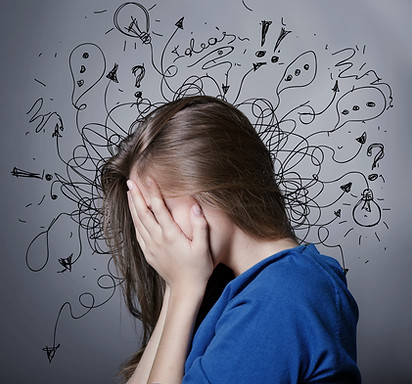Counseling For Anxiety – What Are the Different Types of Counseling For Anxiety?
by siteadmin

The right counseling for anxiety can help people to feel better. The right therapy can also ease the emotional and physical stress of living with anxiety.
Anxiety counselling focuses on the root causes of anxiety and helps people learn to manage their symptoms. Therapists often provide psychoeducation about anxiety, teach relaxation skills and use CBT techniques to change unhelpful thoughts.
Cognitive behavioral therapy (CBT)
CBT focuses on changing patterns of thinking that are associated with anxiety. These changes are based on the understanding that your thoughts affect your mood, and that maladaptive behavior can be a result of negative thought patterns. Your therapist will help you learn ways to change these thoughts, and will also teach you techniques to support your treatment outside the therapy office.
Your therapist will also work with you to identify behavior patterns that may be contributing to your anxiety. These behaviors can include distraction coping, which involves doing things to take your mind off anxious feelings and thoughts, and avoidance coping, which involves avoiding situations or people that trigger anxiety. Your therapist will help you to evaluate the short- and long-term consequences of these behaviors and come up with alternative ways to cope. He or she will also teach you skills to recognize irrational predictions and negative distortions in your anxious thoughts and replace them with realistic, calming ones.
Schema therapy
Schema therapy is based on the idea that maladaptive schemas, or coping styles, create negative beliefs about yourself, other people, and your life. These beliefs are long-standing and can influence your thoughts, feelings, and behaviors in ways that are harmful to yourself. These coping styles are also called schema modes and they are often associated with mental health problems, unhealthy relationships, and instability in your daily life.
These schema modes can be identified by a therapist by looking at their client’s patterns of response to different situations and events. They can also be examined by using a schema inventory or a schema mode inventory.
Studies of schema therapy have shown that symptom change is mediated by changes in schemas. For example, a study of depression by Nadort et al showed that patients who underwent schema therapy had fewer maladaptive schemas and less severe symptoms at follow-up compared to controls. These results suggest that schema change can lead to symptom reduction in the same way that pharmacotherapy does.
Eye movement therapy
Eye movement desensitization and reprocessing, or EMDR, is a type of psychotherapy that uses eye movements to help you process disturbing memories. It is often used to treat post-traumatic stress disorder, but it can also help alleviate anxiety disorders. It’s a relatively new therapy, but it’s been shown to be effective in treating phobias and panic attacks.
In EMDR, you’ll recall the memory of your distressing experience while you follow a therapist’s lateral eye movements. The goal is to reduce the emotional intensity of the image or memory and remove it from your list of triggers. After a set of eye movements, you’ll focus on positive beliefs and emotions to replace the negative ones.
EMDR is a short-term therapy, and most people attend 2-15 sessions. It is most commonly combined with cognitive behavioral therapy for anxiety. Psychiatrists also often use mindfulness, yoga, and body relaxation training to supplement EMDR. This allows clients to have some immediate symptom relief while EMDR works on longer-term relief.
Mindfulness
Mindfulness is a way to focus on the present moment, and it can help you manage anxiety. It involves intentionally focusing on your breath and remaining present with what’s happening in the moment. It also involves practicing self-compassion and allowing difficult thoughts to pass through without judgement. It helps to learn to sit with your feelings and emotions, which can be very challenging when you are feeling anxious.
It’s important to note that mindfulness isn’t a cure for anxiety, but it can be helpful in quelling the symptoms. In one study, patients who participated in a mindfulness program experienced 30% less anxiety than those who took antidepressants.
Mindfulness meditation can be as short as a single breath, which can help you calm yourself throughout the day. You can also try eating mindfully, and focusing on the flavors of your food and how it feels in your body. This can help you break the cycle of ruminative thinking that fuels your anxieties.
https://fcstherapylasvegas.com
The right counseling for anxiety can help people to feel better. The right therapy can also ease the emotional and physical stress of living with anxiety. Anxiety counselling focuses on the root causes of anxiety and helps people learn to manage their symptoms. Therapists often provide psychoeducation about anxiety, teach relaxation skills and use CBT…
